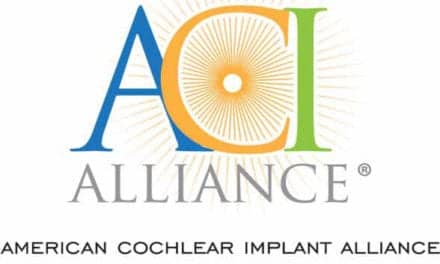Researchers funded by the National Institutes of Health (NIH) have found in mice that supporting cells in the inner ear, once thought to serve only a structural role, can actively help repair damaged sensory hair cells.
The study in the July 25, 2013 online edition of the Journal of Clinical Investigation reveals the rescuing act that supporting cells and a chemical they produce called heat shock protein 70 (HSP70) appear to play in protecting damaged hair cells from death. Finding a way to jumpstart this process in supporting cells offers a potential pathway to prevent hearing loss caused by certain drugs, and possibly by exposure to excess noise.
Over a half million Americans experience hearing loss every year from ototoxic drugs. These include some antibiotics and the chemotherapy drug cisplatin. In addition, about 15% of Americans between the ages of 20 and 69 have noise-induced hearing loss, which also results from damage to the sensory hair cells.
Once destroyed or damaged by noise or drugs, sensory hair cells in the inner ears of humans don’t grow back or self-repair, unlike the sensory hair cells of other animals such as birds and amphibians. This has made exploring potential pathways to protect or regrow hair cells in humans a major focus of hearing research.
“If you’re looking to protect hair cells, you should be looking at supporting cells,” said senior author Lisa Cunningham, PhD, whose laboratory of sensory cell biology at the National Institute on Deafness and Other Communication Disorders (NIDCD), a component of NIH, led the study. “Our study indicates that when the inner ear is under stress, the cell that responds by generating protective proteins is not a hair cell, but a supporting cell.”
Earlier work by Cunningham’s group and other labs had shown that HSP70 can protect hair cells. However, the mechanism wasn’t fully understood.
In this study, researchers exposed mouse utricles to heat and then rapidly preserved them. The scientists found robust expression of HSP70; however, microscopy techniques showed that the protein was located only in the supporting cells, not the hair cells.
Further experiments showed that the supporting cells don’t keep the HSP70 to themselves, but secrete HSP70, which can then protect neighboring hair cells. When utricles that had not undergone heat shock were placed in the same culture as heat-shocked utricles, the hair cells in the untreated utricle were protected from cell death after exposure to an ototoxic antibiotic. Most likely, this could only have happened if the heat-shocked supporting cells shared their HSP70, since the non-heat shocked utricles didn’t generate HSP70 of their own. Further, when the researchers used methods to prevent heat-shocked utricles from producing or secreting HSP70, this protective effect disappeared.
The researchers expected to see hair cells eventually take up the HSP70 produced by heat-shocked supporting cells, but this didn’t happen. Using three different laboratory techniques, they couldn’t find a trace of HSP70 inside hair cells in the mouse utricles.
Dr Cunningham says this could mean one of two things. One possibility is that only tiny amounts of HSP70, at levels too low to be detected, are taken up by the hair cells. The other is that HSP70 works outside the cell, perhaps attaching to a receptor that doesn’t need to be taken up into the hair cell to activate a protective signaling pathway. Follow-up work in Dr Cunningham’s lab will try to identify such a receptor.
Results from other labs studying supporting cells in the inner ear have shown that these cells can also kill hair cells that are too damaged for repair. “When a hair cell is under stress, it looks like a supporting cell is the one that decides whether it’s going to live or die,” said Dr Cunningham.
Still to be explained are how the hair cell signals that it’s in trouble, how the supporting cell senses the signal, and, ultimately, how the supporting cell decides that it’s going to save a hair cell or kill it.
However, a complete understanding of the protective mechanism isn’t required to harness its clinical potential. Dr Cunningham and her colleagues, in collaboration with a clinical team at NIDCD, are designing a human trial to look at ways to induce the production of HSP70 in the inner ear before ototoxic drug treatment.
SOURCE: The National Institute on Deafness and Other Communication Disorders (NIDCD)




